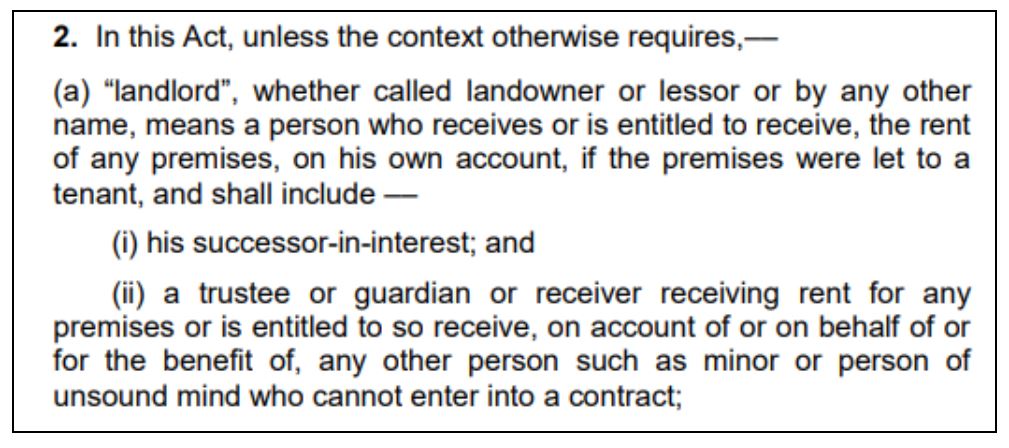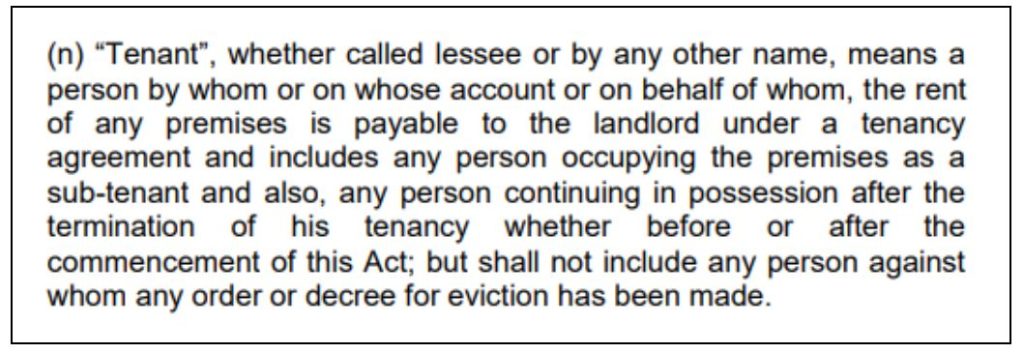Rental housing is an unregulated area and the terms of various aspects related to renting vary from place to place. To bring uniformity in these aspects, the Union Government has come up with a ‘Model Tenancy Act’, which the cabinet recently approved. It is up to the states to enact legislation in line with the model act. Here is an explainer on the provisions of the model act.
On 02 June 2021, the Union Cabinet approved the ‘Model Tenancy Act, 2021’ for circulation to all States and Union Territories for adaptation by way of enacting fresh legislation or by suitably amending the existing rental laws. According to the Union Government’s press release, the Act will help overhaul the legal framework with respect to rental housing across the country, which would help spur its overall growth. The press release added that the ‘Model Tenancy Act’ aims at creating a vibrant, sustainable, and inclusive rental housing market in the country. It is supposed to enable the creation of adequate rental housing stock for all the income groups thereby addressing the issue of homelessness. Further, it is expected to institutionalize rental housing by gradually shifting it towards the formal market and establishing a Rent Authority. We look at the model act in detail in this story.
Draft Model Tenancy Act was released in 2019
In her maiden budget speech in 2019, Finance Minister Nirmala Sitharaman announced that several reform measures would be taken up to promote rental housing as the current rental laws were archaic and did not address the relationship between the Lessor and the Lessee realistically and fairly. She announced that a Model Tenancy Law would be finalized and circulated to the States. The draft Model Tenancy Act 2019 was released.
According to Census 2011, there were about 24.67 million vacant houses of which around 11.09 million houses were in Urban parts of India. That is, over 1.1 crore houses were vacant in Urban areas and so, making these houses available for rent would complement the vision of ‘Housing for All’ by 2022. While the latest numbers are not available, a significant number of houses may still be vacant, especially in the urban areas.

What are the objectives of the Act?
The Model Tenancy Act, 2021 stipulates the following objectives-
- To establish Rent Authority to regulate renting of premises
- To protect the interests of landlords and tenants
- To provide a speedy adjudication mechanism for the resolution of disputes
The act which streamlines the process of renting a property in the country would be applicable prospectively and does not affect the existing tenancies. The States are advised to draw upon the model act and pass their own tenancy acts.
The Model Act talks about establishment of Rent Court and Rent Tribunal
The Act defines the landlord also known as landowner or lessor as –

The tenant or lessee is described as:

Rent authority has been defined as the officer appointed by the District Collector (DC) or District Magistrate (DM) with the approval of the respective State government or UT Administration. Likewise, an Additional Collector or Additional District Magistrate or an officer of equivalent rank appointed is to be appointed as Rent Court. District Judge or Additional District Judge may be appointed by the State government/UT Administration as Rent Tribunal in each district. Both, the Rent Court and the Rent Tribunal are bestowed with the same powers as are vested in a civil court under the Code of Civil Procedure, 1908 for discharging their functions.
Rent agreement is mandatory
The ‘Model Tenancy Act’ stipulates that a written agreement is mandatory between the landlord and the tenant for all new tenancies. The execution of the agreement must be informed to the concerned district ‘Rent Authority’ by the landlord and tenant jointly within two months from the date of the agreement. Following receipt of information, the Rent Authority will provide a unique identification number to the parties and upload details of the agreement in the local vernacular language or state/UT’s language within one week.
Tenure may be extended in event of force majeure
The tenure of tenancy is as specified in the agreement. In case, the tenant fails to vacate the property despite the end of tenancy, they are liable to pay twice the monthly rent for the first two months and four times the monthly rent thereafter until the tenant occupies the property. In case of calamities, or a situation of war, then the landlord shall allow the tenant to continue in possession of the said premises till a period of one month from the date of ceasing of the disastrous event on the same terms and conditions of the tenancy agreement already entered into. However, the list of force majeure events mentioned does not include pandemics or does not link the agreement to a notified disaster as in the case of COVID-19.
Rent authority shall address disputes regarding rent revision
The rent and its revision should be in accordance with the agreement. However, if the landlord has incurred expenditure for carrying out improvement, addition, or structural alteration in the premises occupied by the tenant, then the landlord can increase the rent by an amount as agreed to between the landlord and the tenant. If there are disputes with respect to the revision of rent, the Rent Authority may decide on the revised rent.
The Act puts a ceiling on security deposit
The security deposit to be paid by the tenant in advance should not exceed two months’ rent for residential premises. For non-residential premises, it can go up to six months’ rent. The security deposit should be refunded to the tenant by the landlord on the day of possession of vacant premises from the tenant, after deducting any liability of the tenant. This might bring in uniformity since the security deposit currency varies from 2 months in some cities/states to 12 months in some other cities.
Responsibilities of landlord and tenant have been clearly defined
Both the landlord and the tenant are equally responsible to keep the premises in a good condition. The responsibilities of the landlord in addition to those mentioned in the agreement are as follows;
- Structural repairs unless damage is caused by the tenant
- The whitewashing of walls and painting of doors and windows
- Changing and plumbing pipes when necessary
- Internal and external electrical wiring and related maintenance when necessary
Similarly, responsibilities of tenant are-
- Changing of tap washers and taps
- Drain cleaning
- Repairs- Water closet, washbasin, bathtub, geyser
- Repairs and replacement of electrical equipment, switch and socket, circuit breaker
- Kitchen fixtures repairs.
- Replacement of knobs and locks of doors, cupboards, windows, fly-nets, glass panels in windows, doors, etc.
- Maintenance of gardens and open spaces let out to or used by the tenant.
Repair work may be undertaken by tenant or landlord
If the tenant fails to do the repairs, then the landlord can do the work and deduct the appropriate amount from the security deposit. The deducted amount is to be paid by the tenant within a month. If the cost exceeds the deposit amount, then the tenant is to pay the excess cost also within a month. If the landlord refuses to carry out the work, then the tenant can do the work and deduct the amount from the monthly rent. However, the deduction for each month should not exceed 50% of the agreed rent.
24-hour prior information is compulsory for landlord to enter premises
The landowner or in-charge should enter a premise only after informing the tenant at least 24 hours in advance. They should not enter the premises post-sunset and prior to sunrise. No landlord or property manager can withhold any essential supply to the premises occupied by the tenant.
Tenant may be given eviction order by Rent Court
The tenant cannot be evicted from the premises while the agreement is continuing unless there is a written agreement. However, if the tenant does not pay the rent, or has left the premises without informing the landlord, or has continued to occupy despite the landlord’s notice to vacate, or if the landlord must demolish or alter premises, and in other similar situations, the Rent Court may make an eviction order upon the landlord’s request. If a person is aggrieved by the Rent Court’s decision, they may file an appeal with the Rent Tribunal. Cases should be disposed of within 60 days.
In the case of a tenant wishing to vacate the rented premises, a minimum of one month’s notice to the landlord is mandatory. This is applicable only in cases where such a notice period is not stipulated in the rental agreement.
Execution of the Act is left to States and UTs
The legislation attempts to balance the interests of both tenants and landlords in an accountable and transparent manner. The Act addresses the issues of landlords and tenants by establishing a separate authority which will help reduce the burden on civil courts. Moreover, it will also help in the faster resolution of disputes. The ceiling on the security deposit is also a right move since deposits vary from state to state and in some cases place a huge burden on the tenants. The tenant’s privacy is also ensured by restricting the entry of the landlord.
However, the act is not clear on the penal provisions in case the details of the agreement are not informed to the relevant authorities. It may also place a huge regulatory burden on both landlords and tenants in low-rent housing, markets, and those who are not digitally conversant. Mandatory digitalization of the rental agreement may affect equitable access.
While the government has aimed to reduce homelessness and enhance private participation in rental housing, the execution of the Act is left to the states and UTs. Just like in the case of the RERA Act, the act cannot be imposed on states and UTs as land is a state subject and it is up to the states to enact legislation on the lines of the model act.
Featured Image: Model Tenancy Act


